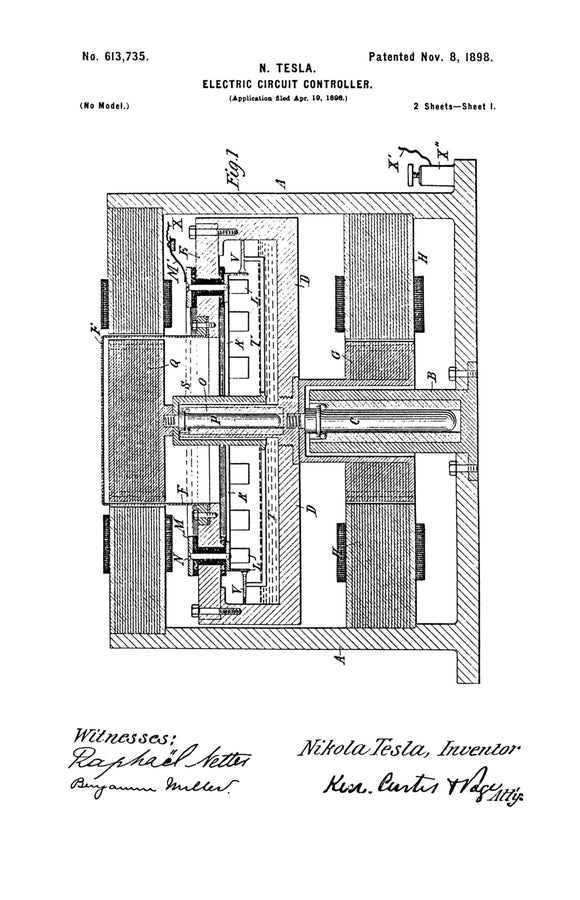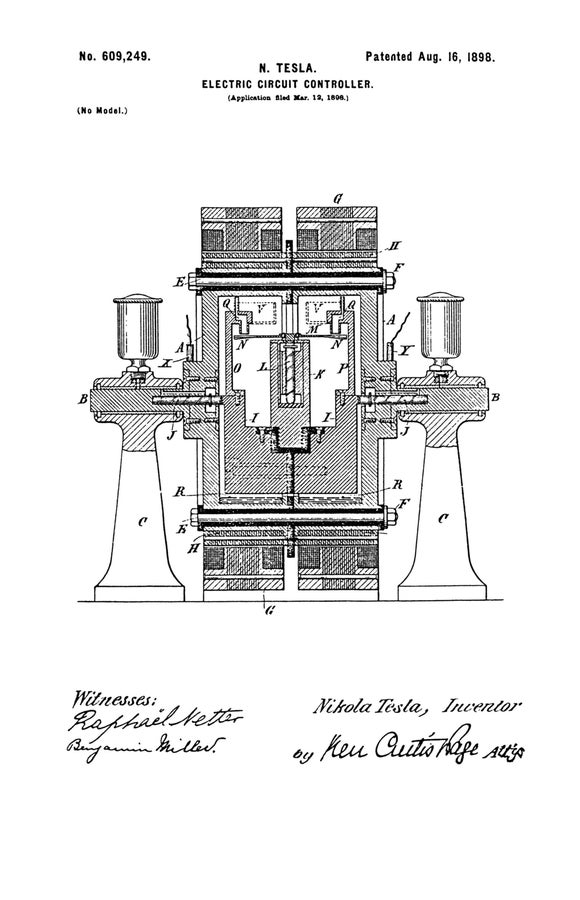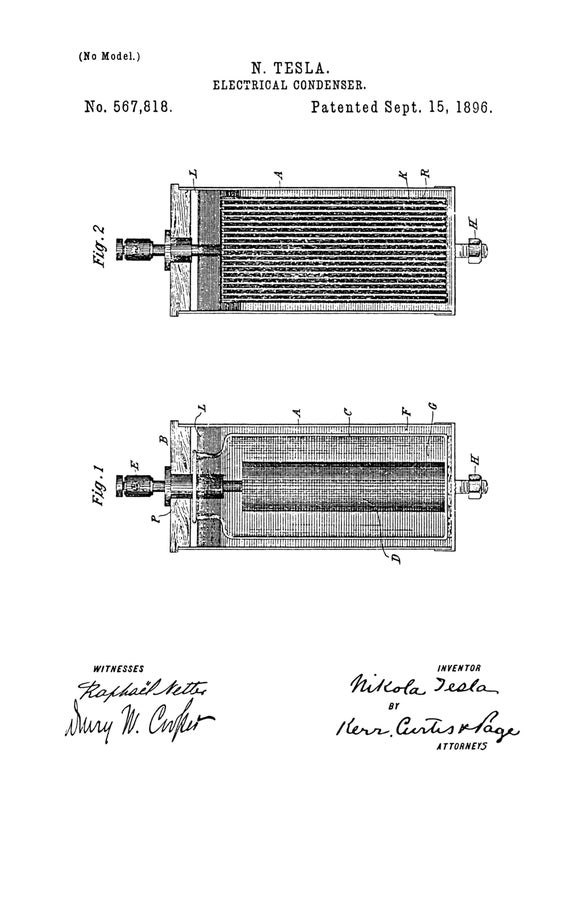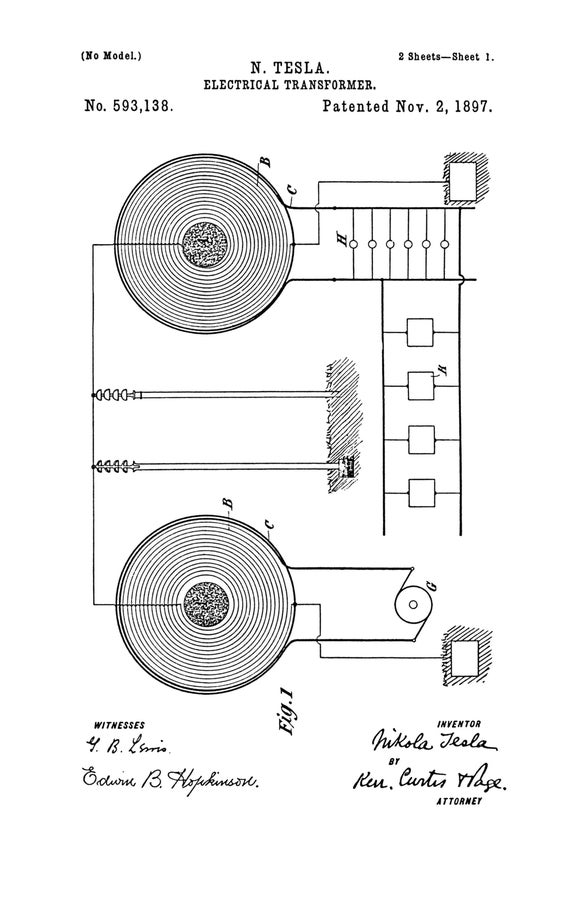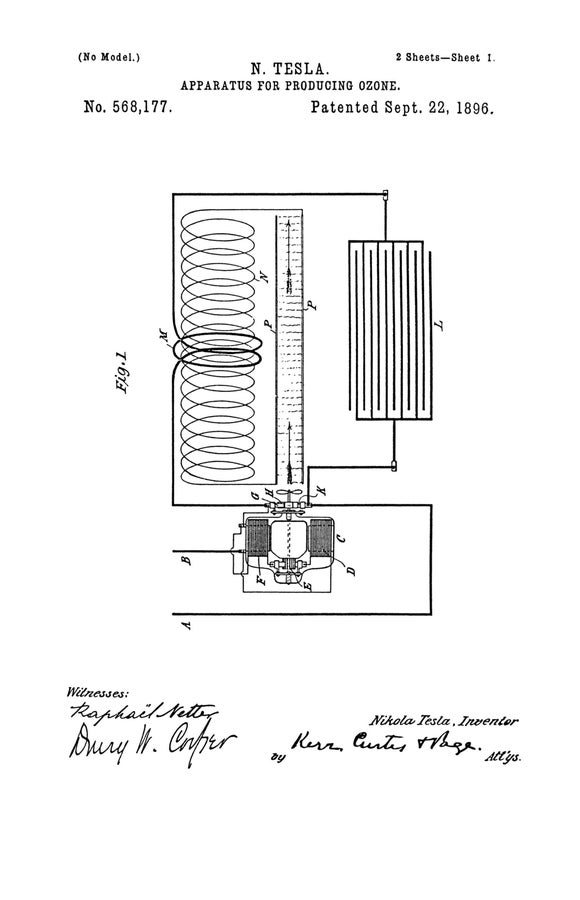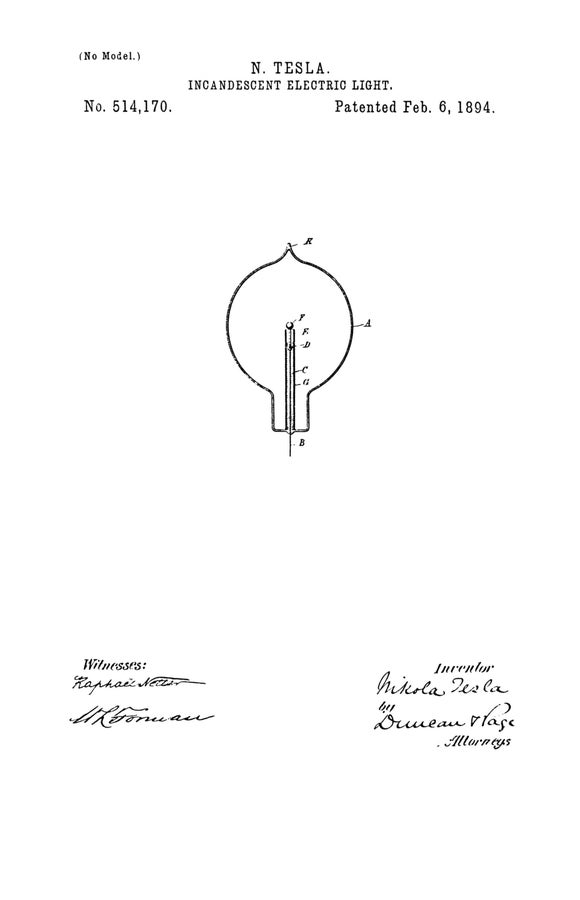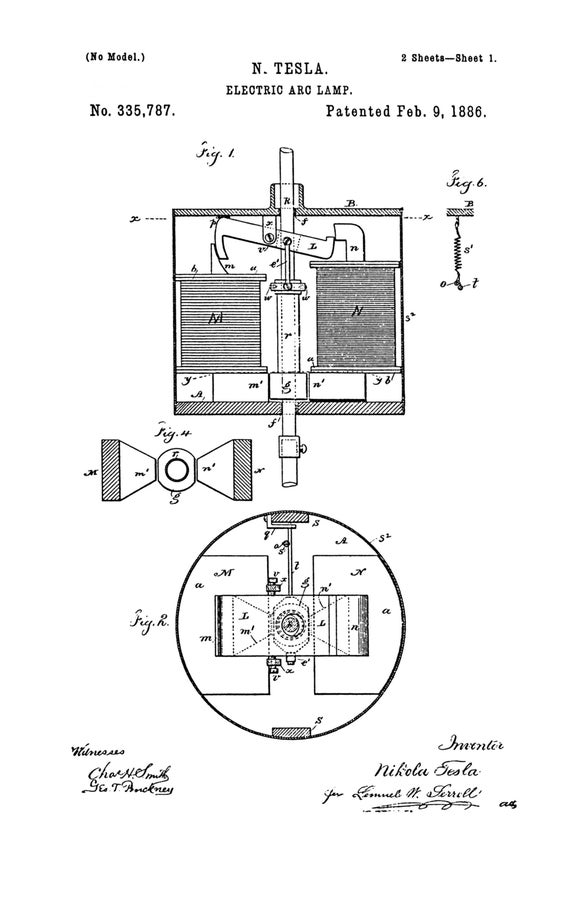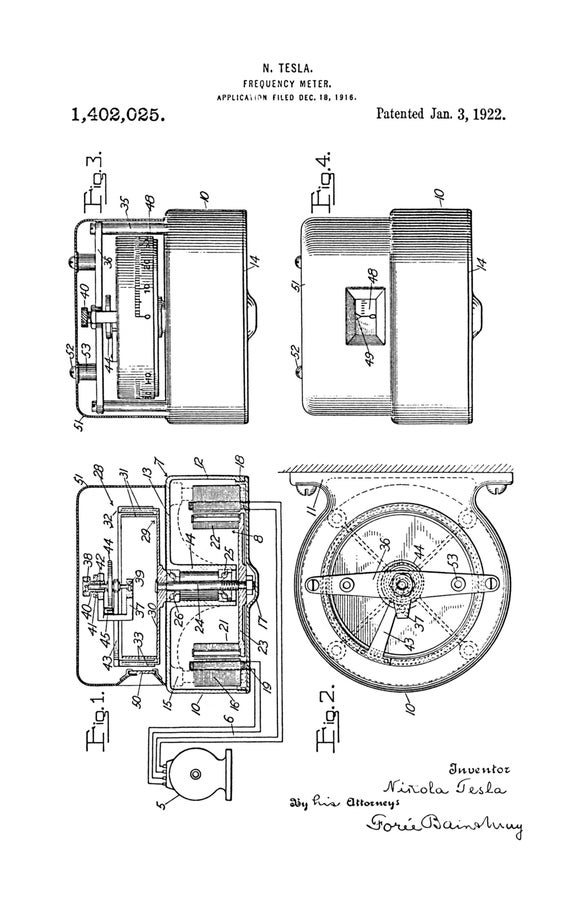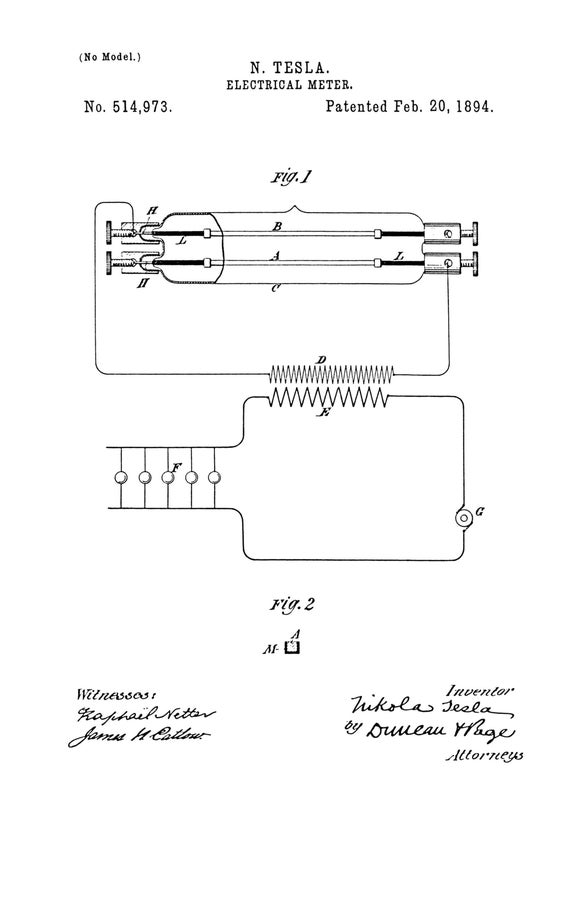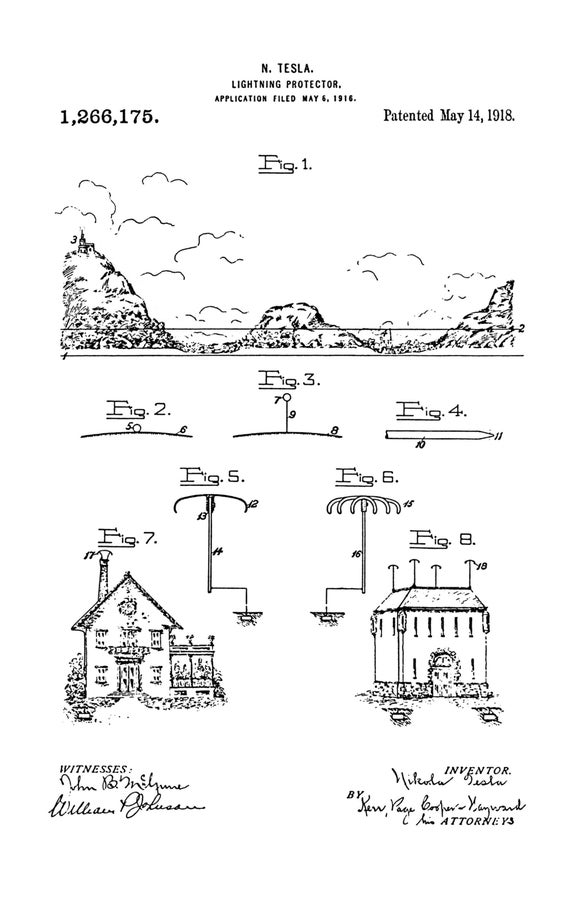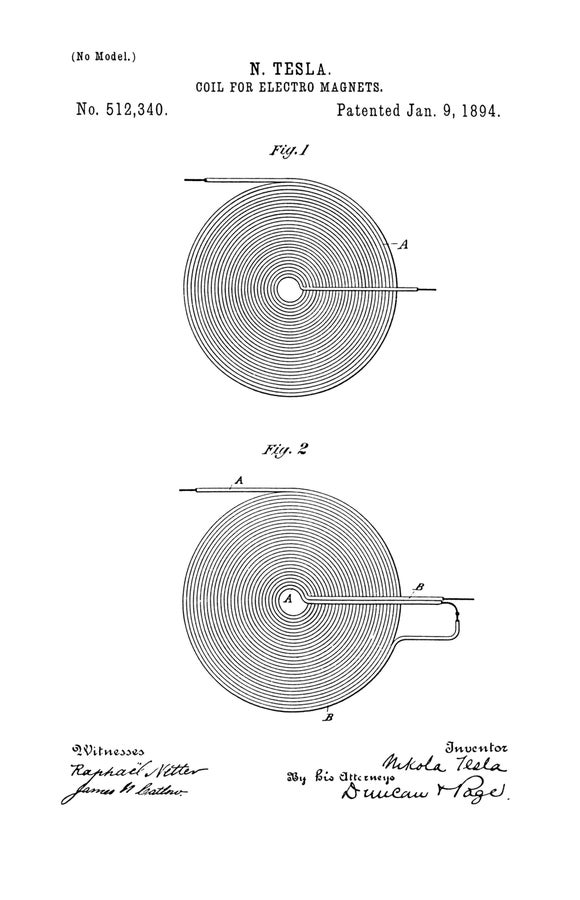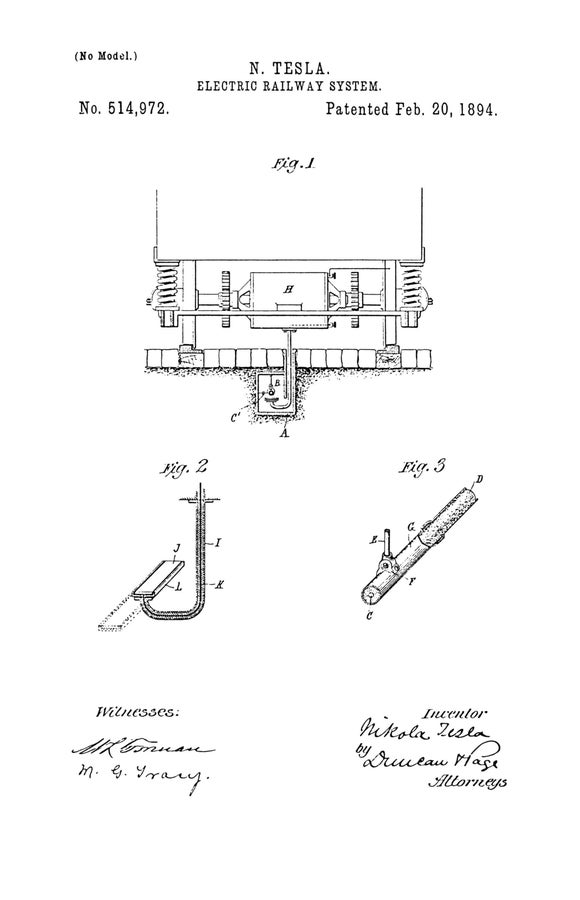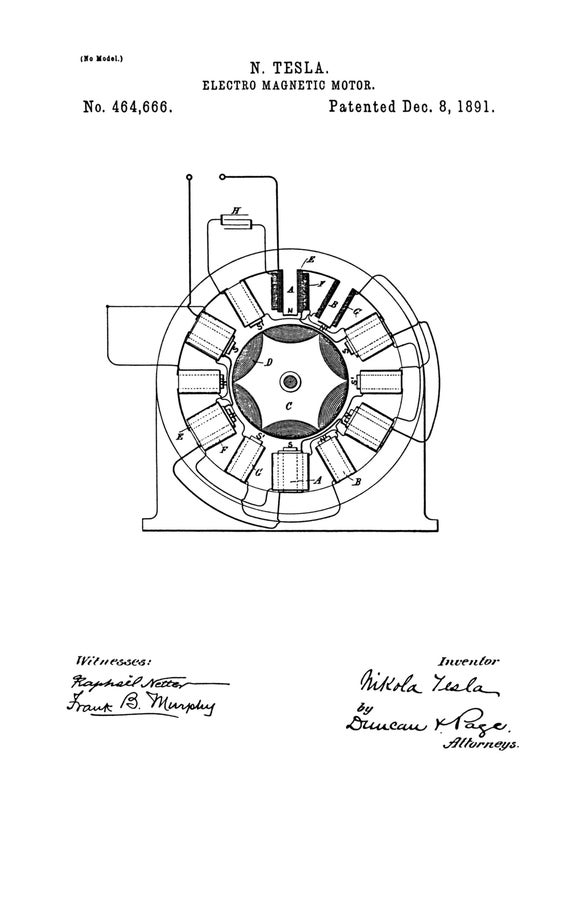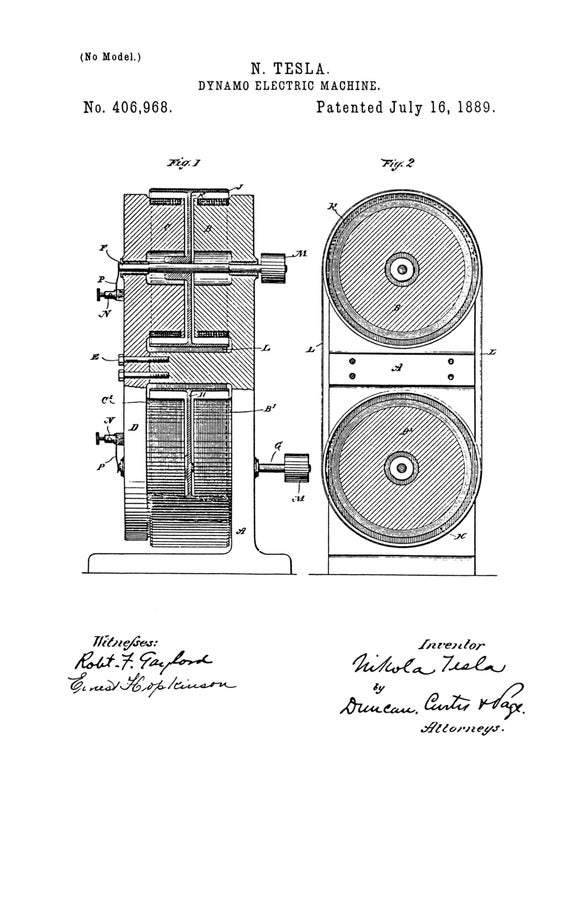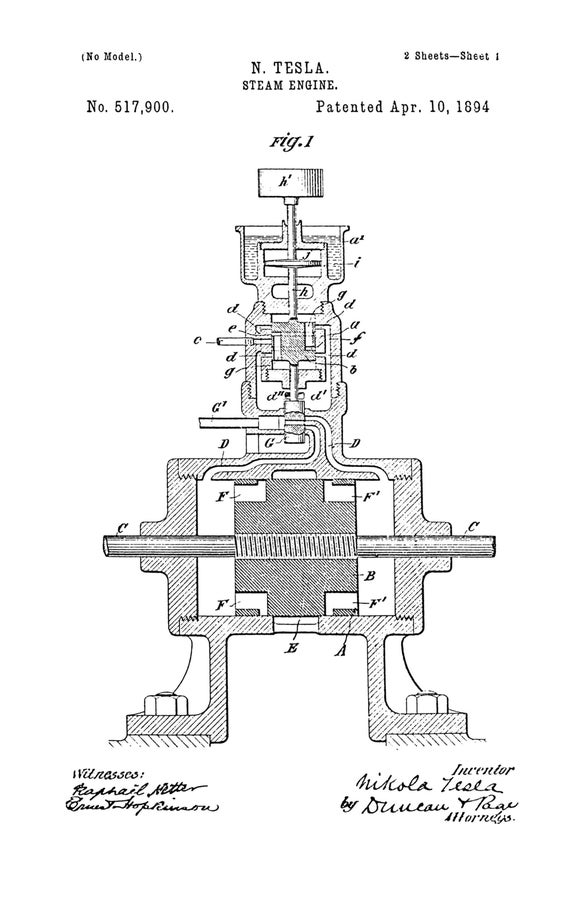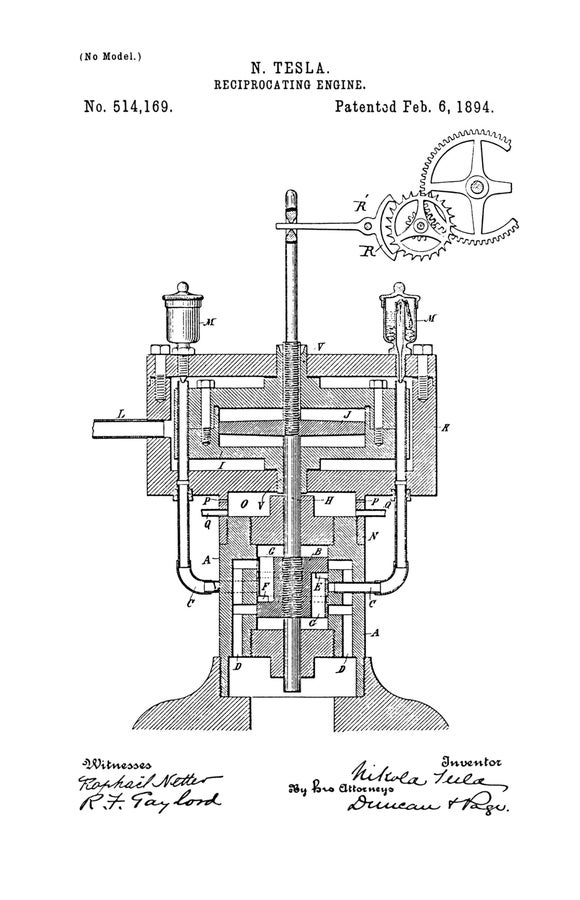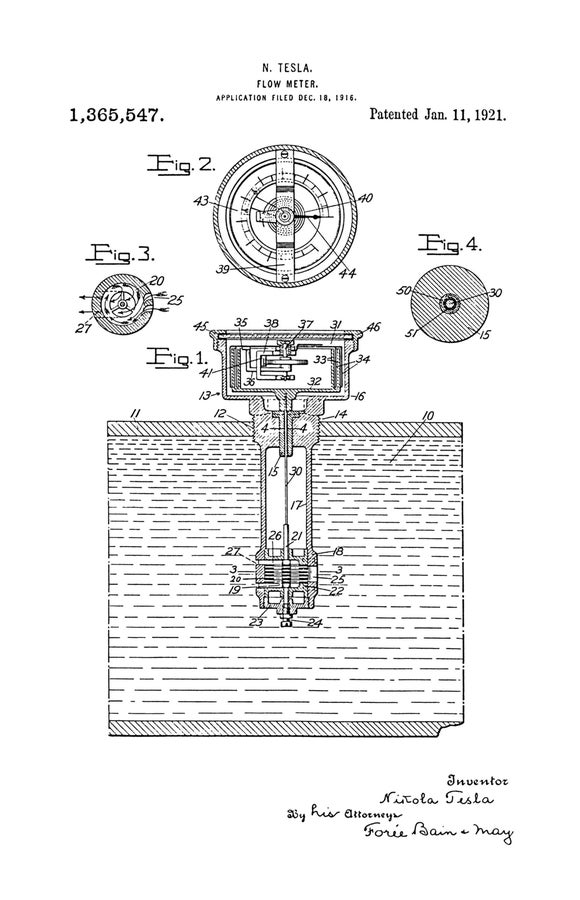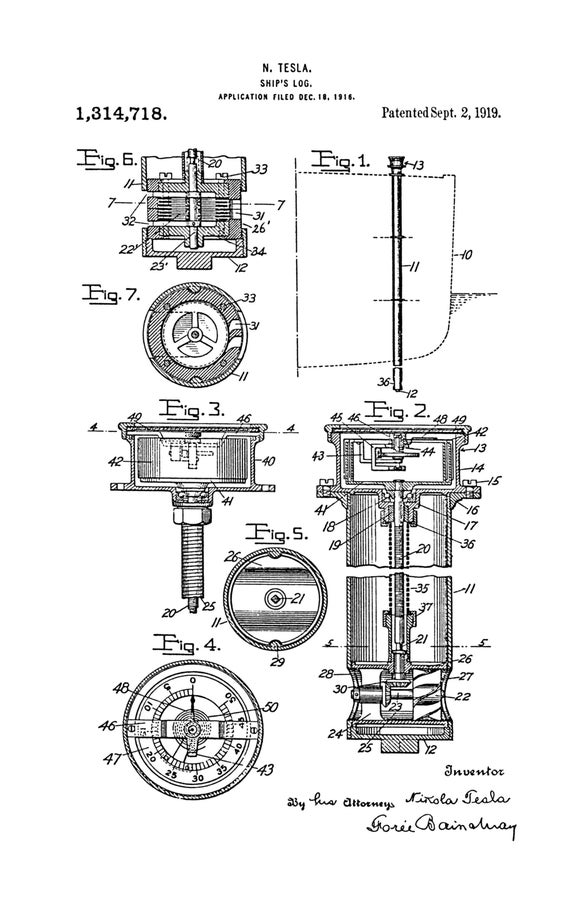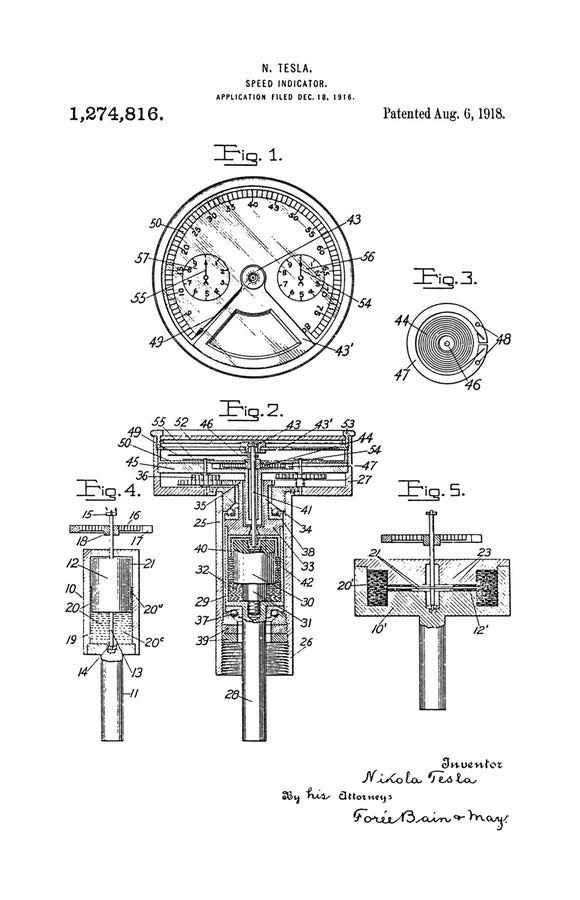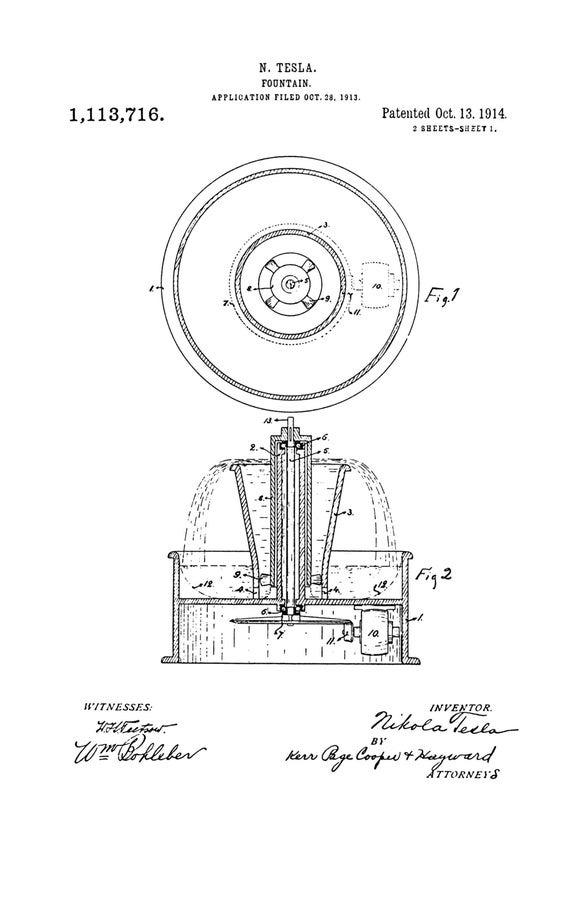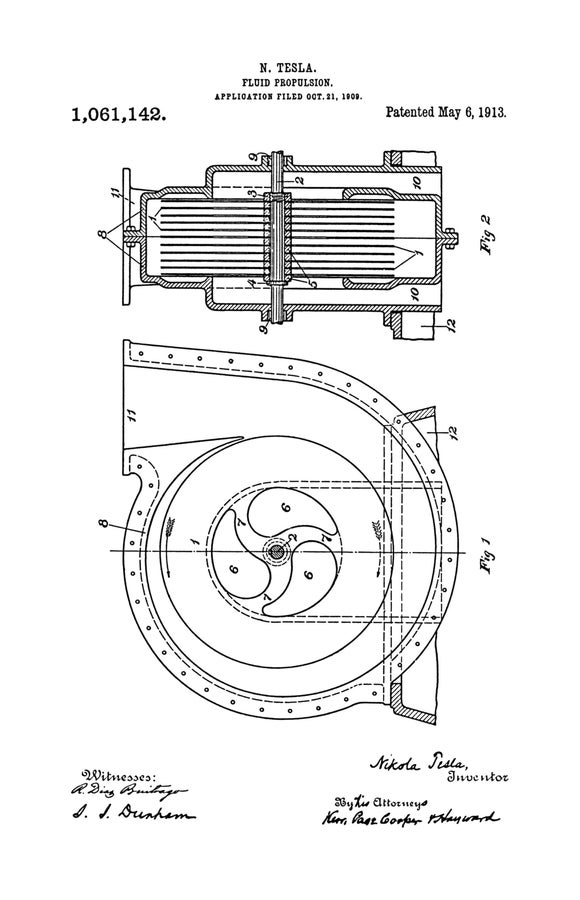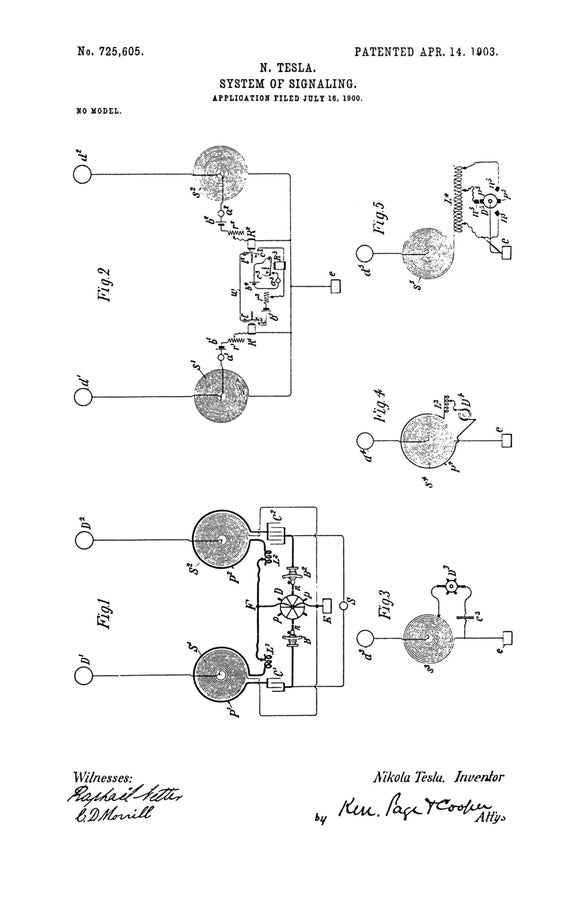Nikola Tesla’s patents for aircraft, ships, railways, autos, and more
Image 1 of 30
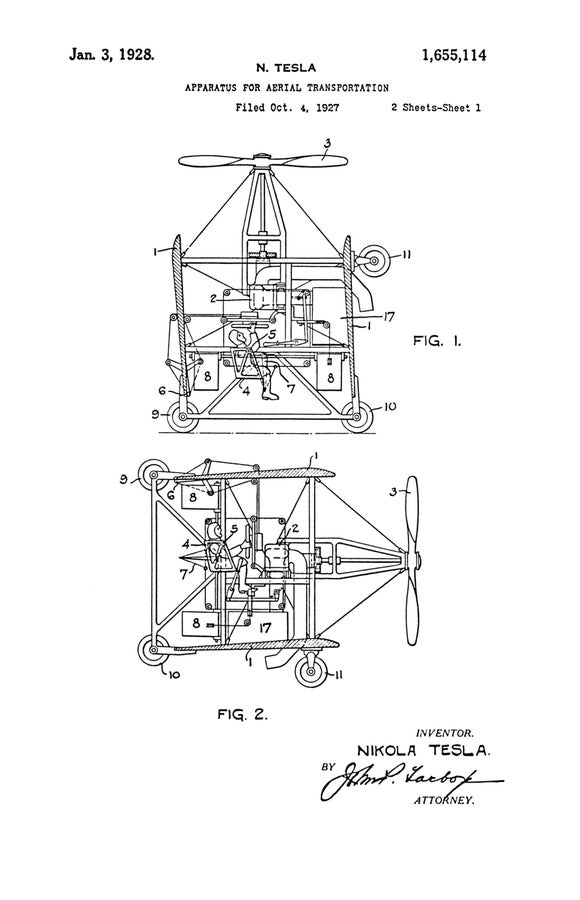

Apparatus for Aerial Transportation
Apparatus for Aerial Transportation
When people hear the name Nikola Tesla (1856-1943), they think of Tesla cars, Tesla coils, or electricity (assuming they have heard of him at all). Most of Tesla’s inventions and patents (of which there are hundreds) are related to electricity, but several of his creations are not. In this gallery, we look at 30 of Tesla’s patents. All patent images are courtesy of Tesla Universe.
This is one of the few non-electric patents by Tesla. Later in his life, he was very interested in aerial flight, especially helicopters. He went so far as to file a patent for an Apparatus for Aerial Transportation, which he termed a “helicopter-plane.” In the application, he goes through all of the math on how a helicopter alights itself and attains flight and then dismisses the traditional helicopter as a waste of energy. He then proposes his device, which lifts like a helicopter and then rotates itself so the helicopter blades then become like the propeller of an airplane. During this time, the “wings” of the device (which were vertical when lifting off) become like the wings of an airplane (horizontal). His main proposition for this device was to do away with the need for runways, especially in areas where they are not as feasible.
Image courtesy of Tesla Universe
Electric Circuit Controller
Tesla did some very early work in Electric Circuit Controllers. In this first of two designs, he uses a rotating spindle that rapidly makes and breaks an electric circuit. He uses a liquid conductor and a solid conductor to achieve the circuit. This patent was the last in a series of patents based on this design.
Image courtesy of Tesla Universe
Electric Circuit Controller
Tesla’s alternative design for an Electric Circuit Controller allows for the rotation of the spindle and the body of the device either in opposite directions or in the same direction at differing speeds as needed. This patent focuses on the technology behind that relative movement.
Image courtesy of Tesla Universe
Electrical Condenser
Electrical Condensers, now better known as capacitors, were another focus of Tesla’s work. In this patent, Tesla uses alternating layers of conductor and insulator filled with saline to hold an electric charge.
Image courtesy of Tesla Universe
Electrical Transformer
Because electrical service to homes and business was a new idea in the late 1800s, there was a large body of work to be done on making it safe. Tesla helped by creating an Electrical Transformer, which was safer and had a higher energy potential (voltage).
Image courtesy of Tesla Universe
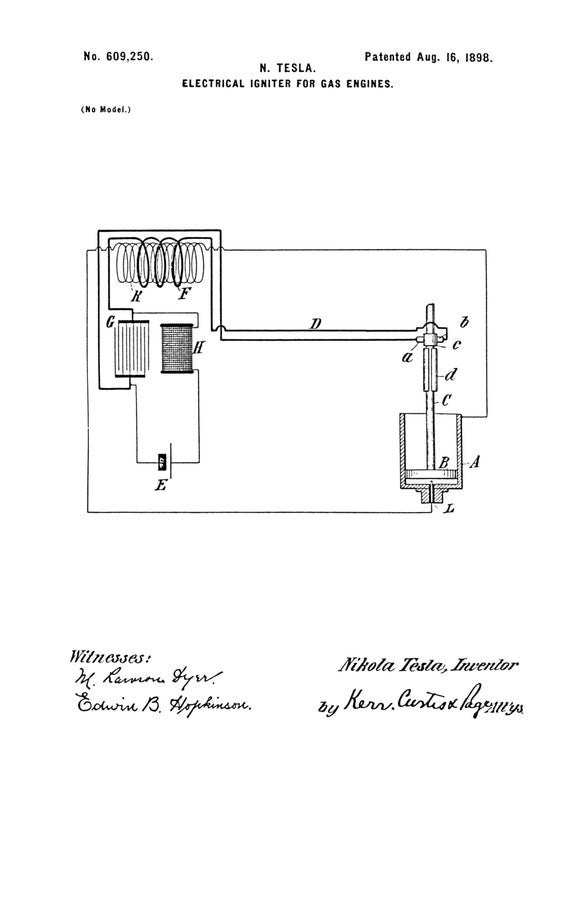

Electrical Igniter for Gas Engines
Electrical Igniter for Gas Engines
Gasoline-powered engines were also very new in the late 1800s. In this patent for an Electrical Igniter for Gas Engines, Tesla proposes to use the piston of the engine as one terminal of an electric circuit and the base of the cylinder as the other. If enough charge is built up in the piston, the charge will jump to a point at the base of the cylinder causing a spark. This spark will ignite the gasoline.
Image courtesy of Tesla Universe
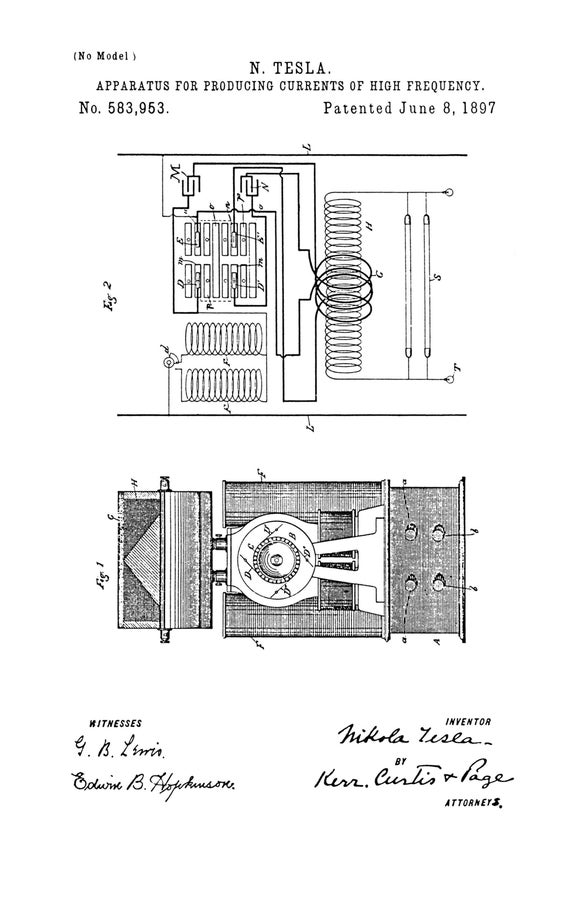

Apparatus for Producing Currents of High Frequency
Apparatus for Producing Currents of High Frequency
Most of us know that common alternating current (AC) electricity (the kind that comes into our homes and businesses) operates at a frequency of 60 Hz. Tesla’s Apparatus for Producing Currents of High Frequency patent proposes one early method for converting the direct current (DC) electrical sources of the time into the now common AC.
Image courtesy of Tesla Universe
Apparatus for Producing Ozone
Many gases, including ozone, are obtained by combining an ordinary gas (in this case, oxygen) with electricity. Tesla’s Apparatus for Producing Ozone forces air between a pair of electrically charged plates that trigger the reaction.
Image courtesy of Tesla Universe
Incandescent Electric Light
In the late 1800s, many inventors were struggling to find a way to produce incandescent light. While Thomas Edison is credited with the invention of the incandescent light bulb, other inventors (including Tesla) were working on the same ideas. Tesla and others continued to work on refining the product, which led to a patent in 1894 for an Incandescent Electric Light by Tesla.
Image courtesy of Tesla Universe
Electric-Arc Lamp
Another common method of generating light in the 1800s was the Electric-Arc Lamp. As with other patents, Tesla improved the common design of these lamps and made them more efficient and safe.
Image courtesy of Tesla Universe
Frequency-Meter
In the early 20th century, reading the frequency of an electric current of oscillation was a difficult task done with expensive and inaccurate equipment. Tesla’s Frequency-Meter greatly increased the accuracy of these readings and also lowered the cost of the reading devices.
Image courtesy of Tesla Universe
Electrical Meter
After electrical power began being delivered to homes and businesses, the electric industry needed a way to properly measure the amount of electricity that was being used. Tesla once again stepped up and created an Electrical Meter, which is composed of two carbon filaments inside of a glass vacuum tube. As an electric current passes from one filament to the other, tiny pieces of carbon also jump from one filament to the other. By measuring the resistance of each filament before and after, the amount of electricity used can be derived.
Image courtesy of Tesla Universe
Lightning-Protector
With his Lightning-Protector, Nikola Tesla attempted to improve upon the Lightning Rods originally created by Ben Franklin in the late 18th century. One fundamental flaw that he overcame was the fact that a lightning rod attracts more lightning than the building it was mounted upon. His design was to affix curved metal bars upon the vertical rod roughly in the shape of an umbrella.
Image courtesy of Tesla Universe
Coil for Electro-Magnets
In his patent for a Coil for Electro-Magnets, Tesla proposed a new way of winding the wire to reduce the energy loss by reducing the occurrence of false currents.
Image courtesy of Tesla Universe
Electric Railway System
Electric streetcars were a common sight in Tesla’s day. One major flaw in cars’ systems was the rolling or sliding contact that transferred electricity from the lines to the car. In his patent for an Electric Railway System, Tesla proposes a form of wireless power transmission that is underground. The power is conducted down a buried channel in which the streetcar’s J-shaped lead passes to pick up and transfer the energy to the car.
Image courtesy of Tesla Universe
Electro-Magnetic Motor
Much earlier in his career, while he was yet a citizen of the Austria-Hungary Empire living in New York, Tesla did some work on Electro-Magnetic Motors. His invention was the ability to artificially cause a quarter-phase difference between two circuits using one motor.
Image courtesy of Tesla Universe
Dynamo-Electric Machine
Another machine that became common during Tesla’s time was the Dynamo-Electric Machine. His patent for this type of device suggests alternating the poles of the surrounding magnets to reduce the need for a very long or a very large circumference cylinder or a very high speed rotation of the conductor.
Image courtesy of Tesla Universe
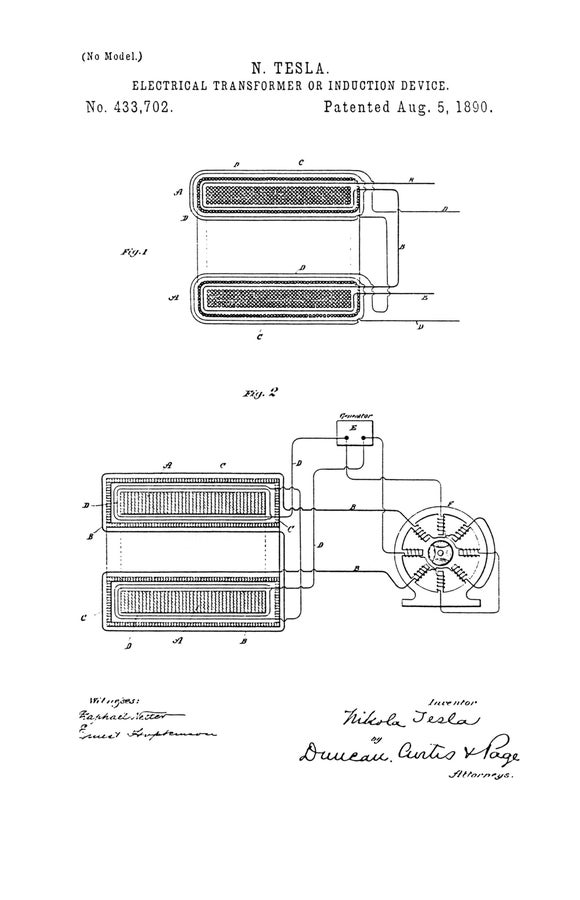

Electrical Transformer or Induction Device
Electrical Transformer or Induction Device
A very early version of his models of transformers and inducers, this Electrical Transformer or Induction Device was primarily designed to improve the function of the motors he was creating at the time, such as those in the last two slides.
Image courtesy of Tesla Universe
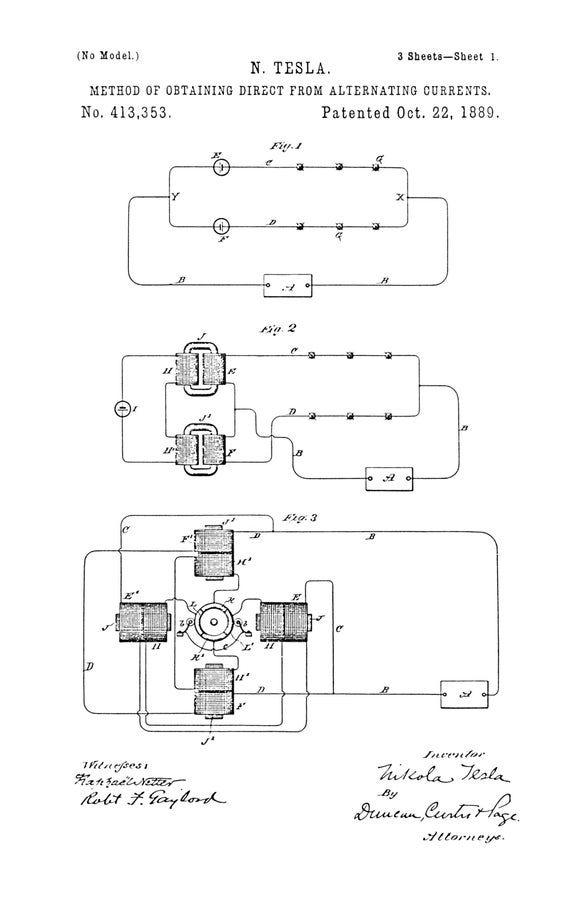

Method of Obtaining Direct from Alternating Currents
Method of Obtaining Direct from Alternating Currents
In the present day, we can convert AC power to DC power by going to the nearest store and picking up a universal adapter; in fact, most of the smaller devices we use — from cell phones to laptops — come with AC to DC converters. In Tesla’s day, however, AC power was cheap to produce, but DC power was needed for most applications. With his Method of Obtaining Direct from Alternating Currents, Tesla proposed an efficient way of converting that power.
Image courtesy of Tesla Universe
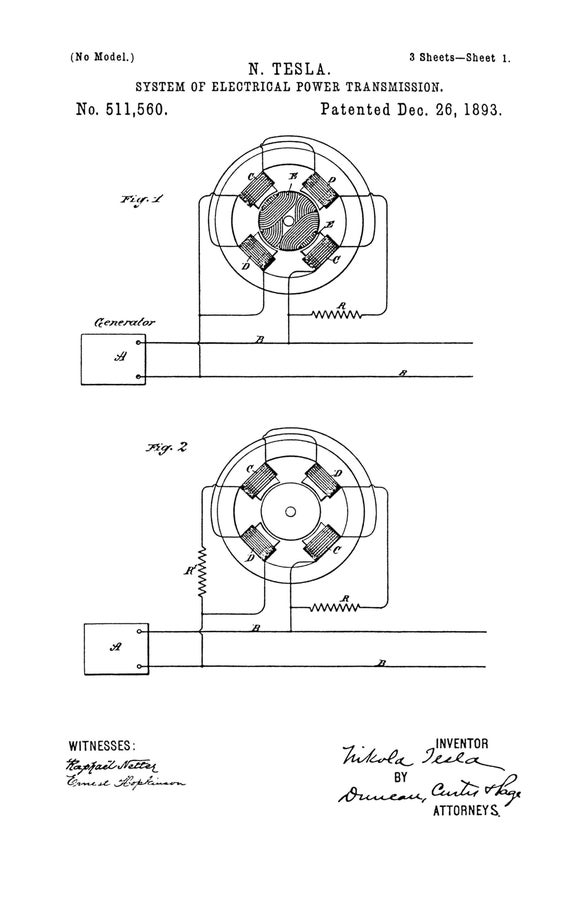

System of Electrical Power Transmission
System of Electrical Power Transmission
In an earlier patent, Tesla conceived of a method of combining multiple phases of electricity on a single transmission line. This probably led to what we commonly transmit: three-phase. In his patent for System of Electrical Power Transmission, he expands on that, creating a system of extracting those phases back out of the single transmission line and powering a multi-phase motor.
Image courtesy of Tesla Universe
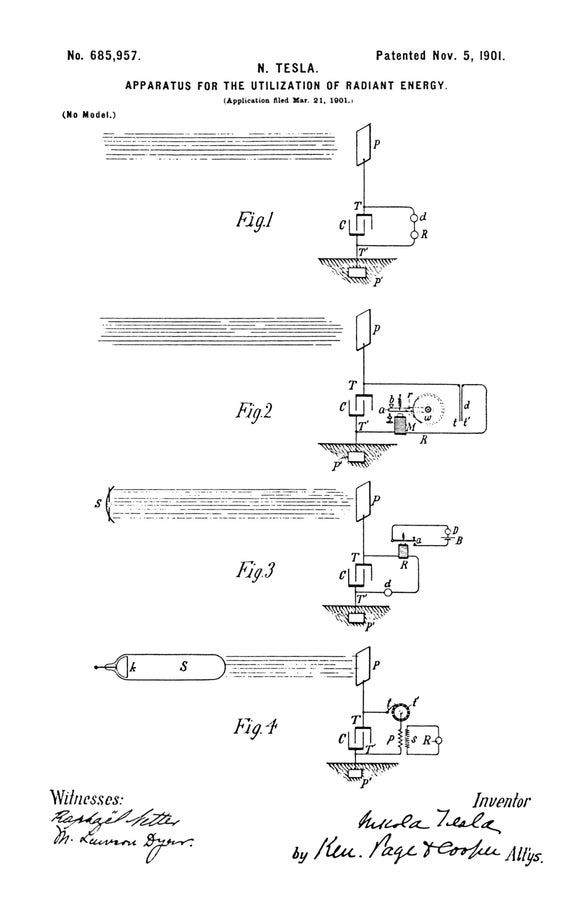

Apparatus for the Utilization of Radiant Energy
Apparatus for the Utilization of Radiant Energy
Another theory Tesla proposed that is now common is that of the presence of photons in rays of light and other electromagnetic rays. To prove such a point, his experiments led to an Apparatus for the Utilization of Radiant Energy, which is basically a precursor to modern solar cell technology and other photoelectric devices.
Image courtesy of Tesla Universe
Steam Engine
In his day, steam engines usually drove a flywheel that maintained an even stroke period and kept a uniform speed. Tesla proposed a spring-loaded Steam Engine, which required no flywheel and was at least as efficient.
Image courtesy of Tesla Universe
Reciprocating Engine
Based on similar theories as the previous slide, Tesla’s Reciprocating Engine is effectively the same basic device but hooked to a gear lock instead of a drive shaft.
Image courtesy of Tesla Universe
Flow-Meter
In addition to the measurement of electrical power use, Tesla also worked toward measuring liquid use either as a quantity or a velocity. His Flow-Meter, when inserted into a water or other fluid main, was a turbine-based device that measured a small portion of a large channel of fluid, which could then be used to calculate the complete usage.
Image courtesy of Tesla Universe
Ship's Log
It was also necessary to improve the way in which ships calculated their speed either in knots or miles per hour. Common ship’s logs of the time were trailed behind the ship and were difficult to read. Tesla’s Ship’s Log, however, was mounted on the bow of the ship below the keel with a speed indicator mounted on the ship where it was easy to see.
Image courtesy of Tesla Universe
Speed Indicator
Later in Tesla’s life, automobiles gained a surge in popularity — so much so that it was necessary to know and control how fast you were going in order to maintain safety. As such, several speedometers came into existence, but Tesla created one of the first Speed Indicators that was capable of maintaining accuracy in a wide range of temperatures while still being low-cost.
Image courtesy of Tesla Universe
Fountain
The scientist and inventor was also affected by objects and displays of beauty. One such display is that of jets or fountains of water used to decorate parks and city squares. Because of this, he created an innovative Fountain that would move large volumes of water with very little energy expenditure. His idea used a screw to propel the water up a conical basin where it spilled over the top as a waterfall. This screw was driven by a motor which was mounted under the pool of water.
Image courtesy of Tesla Universe
Fluid Propulsion
This invention for Fluid Propulsion uses a series of disks that have holes cut in them to form spokes of a curved nature. As the water flows through the device, energy can be transferred to the water in which the device would act as a pump or energy can be taken from the water in which the device would act as a generator.
Image courtesy of Tesla Universe
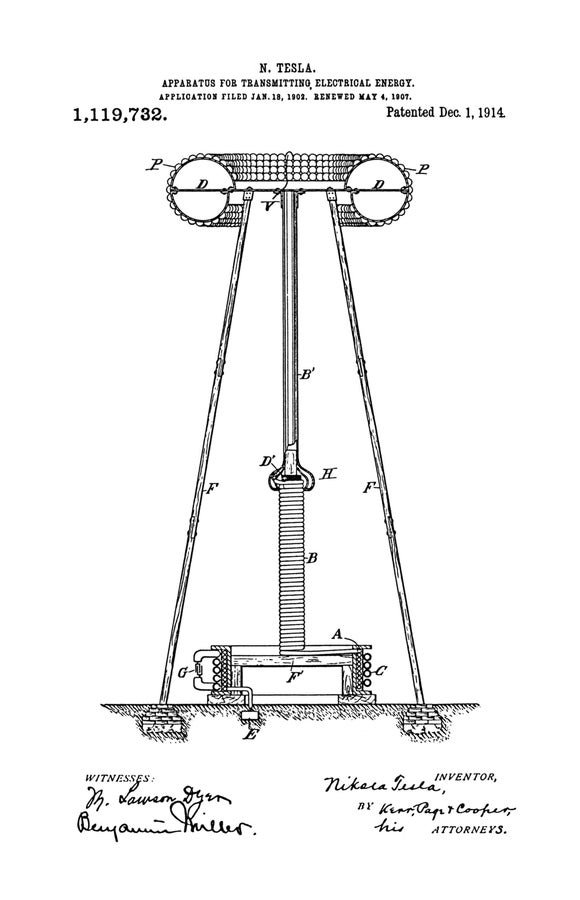

Apparatus for Transmitting Electrical Energy
Apparatus for Transmitting Electrical Energy
A system of wireless power transmission, the Apparatus for Transmitting Electrical Energy is what is now known as the Tesla Coil. It is a tower base with a doughnut-shaped “coil” at the top where electricity can jump through natural media from tower to tower.
Image courtesy of Tesla Universe
System of Signaling
In the System of Signaling patent, Tesla proposed several improvements on current systems of his time. The primary improvement being the ability to transmit multiple signal types in the same transmission to improve reception and decoding at the receiving end.
Image courtesy of Tesla Universe
